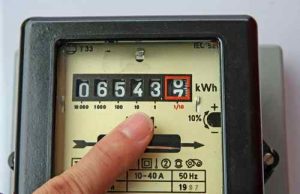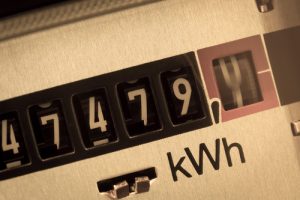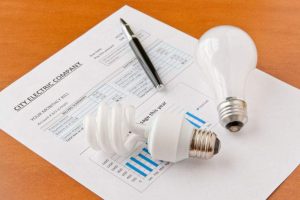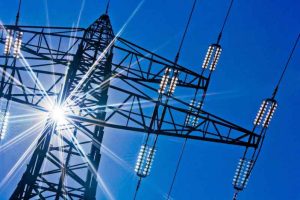Building Smart Cities: How Smart Meters and Smart grids can help?
- What is a Smart City?
- Smart Cities: From an “Energy” perspective
- What are Smart Grids?
- Comparison of the traditional electricity grids and smart grids
- The current scenario of electricity meters
- What are Smart Meters?
- Advantages of Smart Meters
- Issues pertaining to Smart Meters
- Getting Smart: Large scope of energy-efficiency and conservation
- What does it all mean to an average individual?
- References
- Image Attribution
There has been a lot of talk about “smart cities” lately. Government of India has declared that India is planning to have 100 new smart cities. Not only India, countries all over the world are striving to build smart cities in order to increase productivity and socio-economic growth of the country.
- What is a Smart City?
- Smart Cities: From an “Energy” perspective
- What are Smart Grids?
- Comparison of the traditional electricity grids and smart grids
- The current scenario of electricity meters
- What are Smart Meters?
- Advantages of Smart Meters
- Issues pertaining to Smart Meters
- Getting Smart: Large scope of energy-efficiency and conservation
- What does it all mean to an average individual?
- References
- Image Attribution
After seeing such enthusiasm around smart cities, one starts wondering- what is a smart city? Why India and so many other countries are trying to build smart cities. And what does it mean to an average citizen of a country? Does the “concept of smart cities” pertain only to commercial spaces and industries or would it bring a change in his/her lifestyle as well?
To answer all these questions, let us delve a little deeper and try to understand what are smart cities and how are they beneficial to us.
What is a Smart City?
A smart city uses digital technology to improve the performance of the various resources to enhance the overall productivity and well-being of the city. The objective of a Smart City is to use digital communication and technology to optimize the usage of resources like: Energy, Water, Roads/Infrastructure and improve Governance, Transportation, Health Care and Waste Management. The advent of the concept of smart cities rides on the tremendous increase in the usage of the tools of digital technology like smart phones, Internet of Things (IoT), cloud based services and so on which open up different channels of communication and encourages flexibility and better implementation of rules and regulations.
Smart cities are equipped to handle the issues of growing population, climate change, economic stress in the most efficient manner using different tools of communication and information technology. But when we talk about smart cities, it is not economic development only we are talking about; smart cities have a much bigger role to play in the current global scenario. The concept of smart cities houses three key components: Productivity, Inclusion and Resilience (sustainability).
In short, smart cities enhance the productivity of the city along-with increasing the contribution of all the citizens in the overall development of the society. Also, the concept of smart cities supports sustainability and a clean environment. A smart city will have a global responsibility towards the environment and will make sure that the investments made in the field of development does not bring results at the cost of a polluted environment. So in a smart city, there will be efficient and environment friendly ways of transportation, waste-management, electricity transmission and distribution without compromising the overall quality of the entire system.
Although there are several aspects of a Smart City (as listed above), but in this article we would like to highlight some important things from the “Energy” perspective.
Smart Cities: From an “Energy” perspective
Although the concept of smart cities houses many components, here we will try to understand the significance of smart cities from an “energy” perspective.
A smart city, as discussed earlier, will be able to optimize the electricity consumption of the city by being able to record the real-time data pertaining to different residential, commercial and industrial spaces. A smart city is equipped with smart grids which facilitate this collection and transferring of electricity related data throughout the city, free from all hassles and wouldn’t even require manual labor.
So an individual living in a smart city essentially would have excellent control over his/her electricity consumption and ultimately would be able to optimize the expenses incurred on the electricity bills. This not only would help curb the unbridled electricity consumption but also ease the enormous pressure on the sources of electricity.
It is important to note that, from an energy perspective, smart grids play a crucial role in building smart cities. Why and how? Let us find out.
What are Smart Grids?
Smart grids are an advancement of the electricity grids that are being used currently. A smart grid is an electrical grid that uses modern technology (digital or analog) to collect and communicate electricity related information of both the suppliers and consumers. It not only enhances efficiency and reliability, but also improves the production and distribution of electricity to the consumers. The process of installing a smart grid necessarily means technical re-designing of the infrastructure at different levels. One such measure means replacing the existing electronic meters (or electromechanical meters) with smart meters, to enhance the sustainability and efficiency of the entire electrical system.
Comparison of the traditional electricity grids and smart grids
Let us compare these two modes of electricity transmission with an example.
Suppose there are two regions namely A and B, in a city. The total power capacity allotted to region A is 20 kVA and the total capacity allotted to to region B is 10 kVA. But the actual consumption of region A is 12-13 kVA and for region B, the consumption of power is almost 10 kVA and sometimes it even overshoots the total power capacity of region B.
Now in case of traditional electricity grids, there is a lot of power that is not being used, which can be used by those regions which have a shortage of power supply. On the other hand, there may be a system failure in the second case, when the actual power consumption is consistently around the total capacity provided to that region, and sometimes even crosses the maximum capacity.
Smart grids present an elegant solution to this problem. Since the whole process of power transmission and data collection is automated, when a smart grid observes that there is a skewness in the electricity consumption of the two regions, it automatically re-distributes the power according to the usage of the regions, thereby removing any imbalance in the electricity distribution and consumption and saving a lot of energy, by minimizing the scope of wastage.
A smart meter is the basic component of a smart grid. Thus, it is important to understand what is a smart meter and how does it function. Let us try and find out.
The current scenario of electricity meters
We are used to seeing either an electromechanical meter (with a rotating disk to record the electricity consumption) or an electronic meter (with digital figures) at our houses, offices or any other property to measure our electricity usage. Typically, at the end of the month (or months) a representative of the utility (the company/organization that provides electricity to you) comes to the property, observes the reading in the meter and subsequently you get the bill for the units of electricity you have used in that period of time. And that’s all.
As far as the customers are concerned, there does not seem to be any problem with this mechanism. But still, since manual labor is involved, there are bound to be some errors/irregularities. In order to minimize the chances and number of mistakes and maximize the efficiency and performance of the whole system, smart meters step in the picture.
What are Smart Meters?
A smart meter is an electronic measurement device installed by the utility to maintain a two-way communication between the consumer and the utility and also manage the electrical system of the consumer. A smart meter is capable of communicating the real time energy-consumption of an electrical system in very short intervals of time to the connected utility. In the electronic meters/electromechanical meters, the cumulative number of electricity units was recorded at the end of a month (or more) whereas a smart reader is connected to the utility which is capable of transmitting the electricity usage on a real-time basis.
Smart meters thus facilitate real-time pricing, automated recording of the electricity consumption and a complete eradication of errors due to manual readings and reduce labor cost and enable instant fault detection.
Advantages of Smart Meters
1. Accuracy in meter reading: In case of electromechanical/electronic meters, the meter readings have to be read by a representative of the utility. Smart meters automatically transmit the readings to the connected utility.
2. Data recording: Conventional meters only record the electricity consumption of a system, and not when and how the electricity is used. Smart meters record real-time data corresponding to the electricity consumption. It means that they also record the time and patterns of electricity consumption.
3. Real time tracking: What’s really nice about these meters is that consumers can go online and check out their electricity usage patterns and make changes to their consumption accordingly. In this way, smart meters offer a strong control to the consumers over their usage.
4. Automatic outage detection: A person having a conventional meter has to call the utility whenever there is a power outage whereas in case of smart meters, there is an automatic outage detection as they are constantly synchronized with the electric grid.
5. Better service: As smart meters are directly connected to the utility, it becomes much more simple to connect/disconnect power for a particular house/property, saving the need of a technician going to the house in person and connect/disconnect the supply.
Issues pertaining to Smart Meters
When smart meters were first installed in some western countries, some unanticipated reactions of people surfaced. One such reaction pertained to the ability of the utility to disconnect the power supply of people who did not pay their electricity bills, without sending a representative to the concerned property.Although on the utility’s part, it is not unjustified to do so, but such a practice of remote disconnection of power-supply would put low-income consumers at a risk.
There were also some concerns that were raised regarding the detailed information that the smart meters glean about the energy usage of people. Again, this access to this information is fairly innocuous, but some claimed that by having such detailed information on the usage patterns of consumers would gain knowledge of the consumers’ habits like at what time nearly all the people are at home, at what time people are watching television, are there any inhabitants at a property at a particular time and so on which might then be used by third parties.
Getting Smart: Large scope of energy-efficiency and conservation
All in all, smart meters not only enhance the ease with which electricity bills are generated and transmitted, they also provide better control on one’s electricity consumption by providing real time consumption data. The consumer can monitor his/her electricity usage and in turn optimize his/her consumption. A smart meter also offers insights into the expenditure on electricity which proves to be a great incentive for consumers to save electricity and in turn reduce the pressure on the constantly depleting non-renewable sources of energy. A network of all the smart meters connected to a smart grid will positively influence the methods and modes of electricity generation, transmission and distribution.
What does it all mean to an average individual?
Any topic of national interest is incomplete without factoring in the expectations and potential benefits of an average citizen. Smart cities, along-with enhancing the economic and social growth of a nation, also brings a lot of convenience in the lives of its citizens. Smart cities have a dynamic network of electricity-data communication network which enables fast and reliable transfer of data. What it means, for an average citizen, is that he/she would be able to get a detailed information about the electricity usage behavior and optimize it accordingly. In western countries several new companies have come up that provide very interesting insights to individuals about their electricity consumption. Here are some of the interesting initiatives:
1) Itemized bills: Entrepreneurs have come up with interesting models to capture itemized billing of electricity using the Smart Meter data. This helps individuals accurately analyze the amount of money they spend each month on their individual appliances like Air Conditioners, Refrigerators, Lights, Fans, etc.
2) Social Comparison and Benchmarking: We get our electricity bills but we hardly know if they are high or low. Entrepreneurs have come up with technical models and tool that help benchmark energy consumption so that you can understand how much electricity is consumed by an average household of your profile across the country as well as within the city. This helps one to figure out if they are consuming more or less. Additionally information is provided to individuals on how they can control their electricity consumption.
3) Green Button Initiative: The US government has started Green Button Initiative (http://www.greenbuttondata.org/) where they collect smart meter data of all the individuals from electricity distribution companies. Individuals can thereafter give authorization to various companies who can take the data and provide analysis of the data and can also suggest ways of reduction to individuals.
So in all using Smart Meter data, several insights can be generated on individuals electricity consumption and ways can be found out to reduce the same.
References
http://www.academia.edu/9005200/Hardware_Design_of_a_Smart_Meter
http://www.academia.edu/8872228/SCE_Smart_Meter_Deployment_A_case_study
http://en.wikipedia.org/wiki/Smart_grid
http://none.cs.umass.edu/papers/pdf/buildsys10.pdf
Image Attribution
“Creative Commons Smart City Cube” by 盧柏宇 is licensed under CC BY 3.0






